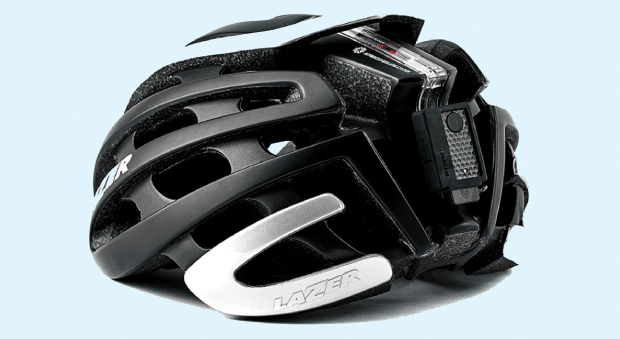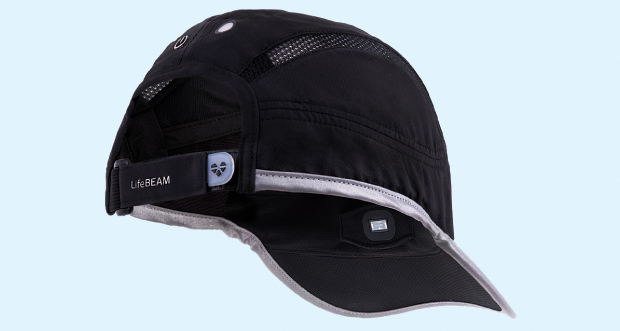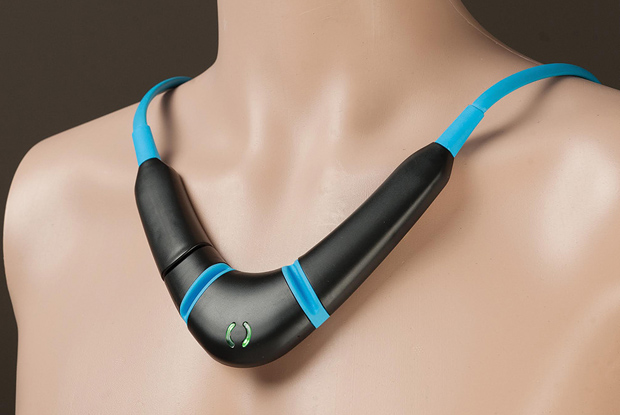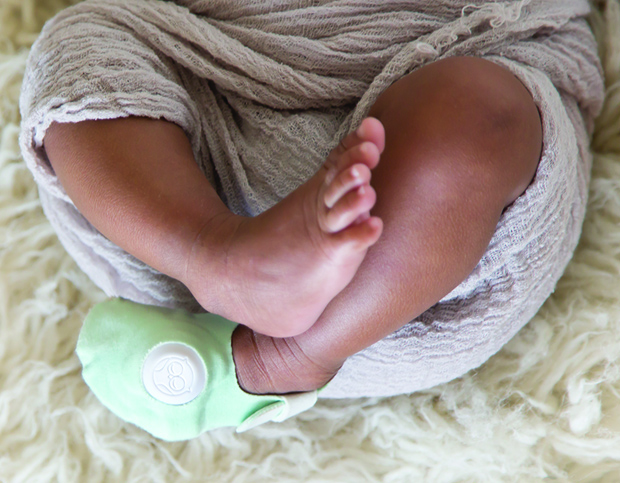The pulse rate has long been considered a basic and essential window on a person’s general physical condition. A racing heart could mean a person is at risk for a heart attack or, conversely, simply stressed, excited, or exercising. An erratic heartbeat could be a sign of a thyroid condition or, rather, just an indication that a person has indulged in one too many cups of coffee that morning. A slow pulse, on the other hand, could be a sign of a serious electrical problem within the organ or suggest, to the contrary, that a heart is as strong as an ox.
Because heart rate comes into play in so many different ways, indicating activity level, physiological arousal, and state of mind, it has become an essential component in the ever-expanding number of personal fitness trackers on the market today. From the Fitbit Charge to the Garmin smart watch to the Lifetrak C300, there is a plethora of wristbands and smart watches on the market monitoring heart rate. However, it doesn’t stop there. Today, as devices become more sophisticated and the potential of the technology expands, companies are getting increasingly creative about how and why remote heart monitoring is done. Today, heart-rate monitors are appearing not only as the ubiquitous wristband but as adhesive tapes, hats, shirts, necklaces, ankle bands, and even dog collars. And these aren’t just for fitness tracking. More devices aim to provide convenient and discreet disease monitoring, as well as to glean information about users who can’t report what they feel. (To read more about how heart rate is being used to enhance video games and in other unexpected places, see the article “The Body Metric“)
“People are interested in heart rate now because we have more awareness around general fitness as a society,” says Eric Louie, M.D., the chief medical officer at Healthbox, a Chicago-based accelerator. “People are eager to grab at ways to easily measure physiology.”
Fine-Tuning Exercise

Stylish pedometers—the Fitbit, for example—helped to kick off a personal data-tracking craze in fitness. Now, increasingly more fitness devices offer some sort of measure of heart rate to help users plan and manage their exercise routines, hitting a target heart rate for a set period of time, for example.
However, measuring the heartbeat by itself is not as straightforward as it sounds. One of the cheapest and most popular technologies for fitness devices infers heart rate through pulse oximetry (photoplethysmography), a method that rapidly transmits light-emitting diodes onto the skin to see how much light bounces back. The amount of reflected light will depend on how much red is showing in the skin—which increases when the heart pulses and sends a surge of blood along the vein. This, by extension, reveals the rate of the heartbeat.
This is the way most wristbands and smart watches report heart rate, but some groups have incorporated optical monitoring in other forms. One company, Israel-based LifeBEAM, integrated optical heart-rate tracking into a cap, visor, and biking helmet for athletes (Figures 1 and 2). It began with testing on pilots, astronauts, and special forces soldiers under extreme conditions to sense, for example, when a pilot might be having a health issue.

Pulse oximetry has a few advantages: it is a relatively cheap and easy technology to deploy, can be much more comfortable for users, and is fairly good at estimating heart rate. However, it’s not always as accurate as the other commonly used heartrate tracking technology—electrocardiography (ECG), which uses electrodes on the skin to record the small electrical charges resulting from the heart muscle’s activity. This method of measurement is generally accepted as the gold standard, used in hospitals and for more accurate health monitoring.
Traditionally, chest bands have been used to pick up subtle electric pulses that convey the nuances of heart rhythm, but these can be clunky and uncomfortable to wear, especially for an extended period. To overcome this, companies have made patches and stickers that capture ECG, such as the adhesive tape SensingStrip and the AmStrip sticker, both intended for athletes. Still others have modernized this format by offering smart clothing: materials that track heart rate and other metrics on the go. For example, a line of fitness apparel by Redwood City, California-based Athos is extensively equipped with heart-rate sensors as well as other sensors for athletes.
Another company, Montreal-based Hexoskin, is developing such clothing for thousands of users—largely researchers and athletes—in sports science and medical applications and has partnered with organizations ranging from Columbia University to the NBA. For example, the shirt (Figure 3) uses embedded sensors to capture ECG and report heart rate and heart-rate variability—a key stat to determine an individual’s metrics. The shirt also captures breathing rate, how much air the user inhales and exhales, and movement.

“We realized the technology had to be part of something people were already wearing to be successful,” says Pierre-Alexandre Fournier, cofounder and chief executive officer of Hexoskin. “It made sense to make the technology part of clothing, specifically a shirt or tank top that would allow the sensors to be close to the heart for maximum accuracy.”
Aside from being more comfortable than a typical chest strap, the shirt is also more accurate than a typical wristband, particularly if the user is moving a lot, according to Fournier. And in some cases, there are other benefits: in contact sports like basketball, players can’t wear anything on their wrists.
Incorporating the technology into a shirt, Fournier adds, retains accuracy while being more usable in a real-life context for both athletes and anyone with health concerns who would benefit from constant and precise heart-rate tracking. “Rather than wearing a strange chest band that people inquire about, this is a form factor that is socially accepted—you can wear it at home, at work, or with friends,” he says.
Monitoring Disease
Aside from casual and professional athletes, those who have chronic illnesses may also benefit from the ease and comfort of wearable heart-rate monitors beyond a chest strap. Such a device would need to be fairly accurate and have U.S. Food and Drug Administration (FDA) approval before being used for medical purposes.
Some wearable consumer products are aiming to detect subtle variations in heartbeat to help alert users and doctors of atypical heart rhythms. Atrial fibrillation, for example, is fairly common and can lead to stroke, especially in the elderly. The ZIO Patch, the smartphone attachment AliveCor Heart Monitor, and the single-use V-Patch are all FDA cleared and aim to serve patients in this way.
Louie, who evaluates many start-ups at Healthbox, says the next class of devices meant for disease or health tracking must offer more than solely a report of heart rate. Contextualizing the subtle differences in heart-rate variation—often with additional physiological sensors or sophisticated algorithms—is essential to providing possibly life-changing information to users.
“Heart rate is a common and important physiological parameter, but it has to be seen in context,” says Louie. “Your heart rate varies considerably throughout the day, and everyone has a different baseline. Devices that measure things like blood pressure or physical movement in addition to heart rate can help place that in context.”

Another device that offers a unique form and a multitude of sensors is San Diego-based toSense’s CoVa Monitoring System (Figure 4), a body-worn sensor designed to look like a necklace (albeit a clunky one). The device received FDA clearance last May and is meant for chronically ill patients—with congestive heart failure or hypertension, for example—to wear for a period during the day to monitor heart rate through ECG and calculate a host of other metrics, such as fluid buildup and respiration. “The device looks to be an effective and cost-effective tool for monitoring patients at risk for heart failure and other chronic diseases in the home environment,” says Susan Pede, vice president of operations at toSense. “It is lightweight, comfortable, and unobtrusive, like a conventional piece of jewelry. Collectively, these factors improve patient compliance.” She adds that clinical trials of the necklace have been well received.
Giving a Voice
Aside from athletes and patients, wearable and wireless heart-rate monitors may even be useful to infants. Boston-based Mimo has introduced a sensor-equipped onesie developed by Massachusetts Institute of Technology alumni, and San Francisco-based Sproutling offers an infant ankle band, both designed to track several physiological measurements—including heart rate—and send the data to the cloud or an app that alerts parents of the baby’s inferred condition. Another company, Utah-based Owlet, offers an unexpected form factor for health monitoring: a baby sock (Figure 5).
“Owlet developed the device based on hospital-grade pulse oximeters but decided on a sock after surveying and testing prototypes with parents who expressed a desire for simplicity,” says Jane Putnam, head of public relations at Owlet.

“We are creating the largest set of infant data that has ever existed. The data will give researchers insights into health trends, correlations, and indicators that have never been seen before,” says Putnam. Owlet has partnered with Seattle Children’s Hospital, the Mayo Clinic, and others to test the accuracy and sensitivity of the device and aims to apply for FDA clearance in mid-2016 for a version that can be used in hospitals, clinical settings, and the home.
Another unexpected permutation for a wearable heart-rate monitor? A dog collar. Virginiabased Voyce (so named because it gives pets a “voice” about their medical state) developed a collar that uses pulse oximetry and other sensors to capture a pet’s changing heart rate, aiming to detect health conditions earlier. For instance, a dog’s heart rate spiking while it is at rest might indicate a health problem or illness; having recorded trends over time could also alert a pet owner to possible anomalies.
Whether for critters or humans, wearable and wireless heart-rate monitors have already shown potential in preventative health. In one incident last September, a Massachusetts high school athlete noticed a persistent, unusually high reading of his heart rate on his Apple Watch, which alerted his coach to the student’s life-threatening condition. As heart-rate monitors become more advanced, comfortable, and ubiquitous, they offer a window into long-term health and habits and, in the best cases, even save lives.



